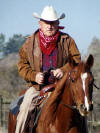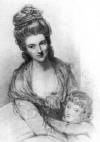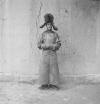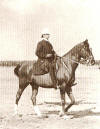
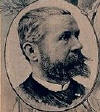
George Cardinet Jr. was not only a Long Rider, he was also known as the father of the modern American trails system. A keen horseman and trail activist since the 1940s, Cardinet was instrumental in developing California’s first long-distance equestrian trails. His most important journey along this important trail system occurred in 1976 when George rode nearly a thousand miles from northern Mexico through California. During that long ride Cardinet closely followed the route used by the Spanish explorer, Juan Bautista de Anza, two hundred years before. Cardinet’s latter-day journey helped inspire the United States government into passing the National Trails System Act, which recognized the country’s extensive system of scenic and historic trails.
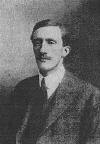
Douglas Carruthers - Few people are blessed with the clarity of purpose which the English Long Rider Douglas Carruthers carried throughout his remarkable and event-filled life. Born in 1882, as a boy he had determined to cross “Darkest Africa,” see the ruins of Petra and reach “that strange capital at the back of the world, Bokhara.” Before he was 26, he had done all three. During this remarkable burst of intense exploration, Carruthers had scrutinized the Middle East, examined Arabia, travelled across Africa from east to west, followed the course of the Congo River, and investigated Central Asia. Yet it was his equestrian journey across Dzungaria which marks Carruthers as an important Historical Long Rider.
In 1910, at the age of 28, the young scientist was joined by a journalist, M.P. Price, and a professional hunter named J.H. Miller. The trio were determined to see Dzungaria, an ancient Mongolian kingdom which lay between Siberia and Mongolia. In fact the obscure realm had been named for the Dzungars, the left (züün) hand (gar) of Genghis Khan’s army.
Our aim was to explore the last stronghold of the indigenous tribes of Southern Siberia and the Great Mongolian plateau,” he wrote.
It may surprise modern equestrian explorers to learn that many of the problems currently affecting 21st century equestrian travel presented challenges to Carruthers and the Long Riders of his generation as well. This included visas and money.
Unlike in today’s ATM or credit card culture, Carruthers noted that he had to estimate all of the expenses for the six month ride across the mountains, tundra and desert that lay before him because, “Our next banking town would be six months and 1,500 miles away.” Adding to his problem was the culture consideration that many of the Mongolian nomads he would encounter had never seen bank notes. Consequently, the English explorers were forced to carry much of their wealth in small gold and silver bars.
But having the money was no guarantee of success, especially when the cynical representatives of the Czar’s Imperial government mistrusted your motives. Thus, despite their scientific credentials, the Long Riders had to contend with a hostile Russian government who disbelieved in their purpose.
“That is an absurd route to take,” the sceptical officials announced. “Nobody goes that way. Besides, the track to Usinsk will be open in a week or two; so why choose this difficult one?”
It was only after Carruthers had appealed to the Governor-General of Siberia, that the proper paperwork was produced and the travellers were permitted to depart across Russian territory, bound for faraway China, via Dzungaria.
The resultant trip took the men and their horses across 5,000 miles of trackless forest, insect infested taiga, freezing steppes and dreary deserts. But despite the physical hardships, Carruthers remained enchanted with travel.
“Day after day, as we travelled across the boundless wastes of Central Asia, we were surrounded by views possessing the magic which inspires a man with great thoughts and makes him long great longings,” he wrote.
At the conclusion of the journey, Carruthers wrote a tremendous book entitled Unknown Mongolia. Not only did it provide its readers with loads of entertaining excitement, the book was also filled with accurate observations of the Uriankhai reindeer herders and other lesser known cultural secrets.
Carruthers was awarded the Patron’s medal by the Royal Geographical Society in London. He went on to inspire a new generation to become explorers and Long Riders. However, he had no tolerance for fools or frauds. Carruthers especially disliked those authors who enriched themselves by writing about how their lack of proper planning had caused them to “suffer this or endure that.” Such actions, he thought, were merely a way for inept travellers to disguise their incompetence and issue a license to lecture. Carruthers, on the other hand, was always eager to advise and encourage young people. Shortly after the Long Rider’s death in 1962, the equally famous camel traveller and Central Asian explorer, Owen Lattimore, recalled the man who had encouraged him to follow the caravan trail across Mongolia.
Carruthers, Lattimore recalled, did not seek fame but truth. Self-glory he disdained, in favour of knowledge. Truth he served, while pride he ignored.
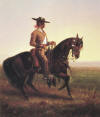
Oh, to be twenty-five, young and in love. For that was what George Cayley was, when he set out in 1852 to ride across one of the most romantic countries in the world. Accompanied by a fellow wandering spirit, the young Englishmen donned the dashing clothes of caballeros, bought two fiery steeds called the Moor and the Cid, then never looked back. Having just arrived from England, with its enthusiastic embrace of the mechanical marvels of the Victorian age, Cayley appreciated and wrote about the still-tranquil life he discovered in Spain. A student of the classics, he wrote movingly about the landscape before the intrusion of the motorized age. The young horseman saw no trains, just lonely mountains. He found few good roads, but plenty of sun-swept villages. He enjoyed scanty fare, but mixed with jubilant people. His journey took him through a slumbering España, from brooding Gibraltar, past glorious Granada, round Ronda, across Segovia and on to the peaks of the Pyrenees. Thus, it was while he was Intoxicated with the magic of Spain, that Cayley stumbled on the birthplace of that country’s greatest literary work of art. At the village of Argamasilla del Alba, the young writer made a pilgrimage to the cellar where “Don Quixote” had been written. It was there, in a damp, underground cell that Miguel Cervantes had penned the magnificent novel, while draped in chains. Cayley's resulting book, Bridle Roads of Spain, is the most beautifully written equestrian travel account of the 19th century.

Evliya Çelebi - rode in Europe, Asia and Africa in the mid-1600s. Considered the most famous Historical Long Rider of the Ottoman Empire, the famous Turkish author wrote that a journey was sometimes comparable to "a fragment of hell!" Çelebi’s journeys formed an important part of the first modern study of “Long Riding in Turkey,” which was written by the Turkish scholar, Uğurhan Acar.
Olive Murray Chapman has been described as
a “determined English lady traveller of legend.”
When reviewing travel literature it is easy to forget the social restraints, not to mention physical dangers, which added additional burdens to independent female travellers in the 19th and early 20th centuries. Olive Chapman was one of that rare breed who refused to be kept at home by such “stuff and nonsense.”
After her husband was killed during the First World War, the young widow determined to make the most of the education provided to her by her surgeon father. Ignoring criticism, she instead followed in the hoofprints of that former famous lady Long Rider author, Isabella Bird. Instead of remarrying, Chapman set out not only to see the world’s more exotic places, but to record her experiences on paper.
Her first journey took her to Iceland, which she eagerly explored on horseback. Not being content to merely recite the history of the remote island, Chapman made it her mission to also interview women in the less frequented portions of the tiny kingdom. During her intensive ride across the rugged terrain she also created beautiful water colours, as well as describing the great social struggle which had occurred between the old Norse religion and Christianity. Though she employed local guides, Chapman made her own decisions, which included climbing to the rim of a bubbling crater emitting noxious fumes. Nor was she put off by the many rushing rivers she routinely rode her pacing pony through. Her journey provided her with enough material to write her first book, which was aptly entitled Across Iceland: The Land of Frost and Fire.
Having established her independence, Chapman went on to explore Cyprus and Madagascar. However, her most challenging journey occurred when she set off to cross the Arctic Circle in Lapland. In the company of a single guide, she rode a sleigh drawn by reindeer during this remarkable journey. When Chapman died in England at the age of 85 in 1977, the New York Times concluded, “Everybody told her she couldn’t do it, that nobody had ever done it, and so she set forth and did it.”
In 1414 a Chinese
diplomat named Chen Cheng became an unlikely Long Rider when he was
ordered by Emperor Yongle to undertake a hazardous equestrian journey to the
distant city of Herat. Located in today’s modern Afghanistan, Herat was then
the capital of the Timurid Empire. Chen Cheng’s mission was to deliver
precious Chinese silks to Emperor Shahrukh. In exchange, the Chinese Long
Rider was ordered to obtain a large herd of the valuable horses used by
Shahrukh’s legendary mounted archers. Though a handful of scholars were
aware of Chen Cheng’s journey, Dr. Sally Church recently completed the first
translation of the Long Rider’s diary. The result is a day-to-day account
which has the ring of authenticity about it. Chen Cheng runs into many
problems, all of which he records. While these include snow storms and bad
trails, one of the most telling is the brief account of how the horses drown
trying to cross the river. There are many occasions during the nine-month
journey when Chen and his friends are just too tired to continue, preferring
instead to take several days away from the intense rigours of their saddles.
This remarkable diary is now considered
the
oldest known example of a Historical Long Rider’s “Story from the Road.”

Thanks to research undertaken by Professor Dr. Georg
Jäger at the Ludwig Maximilians Universität in München, Germany, the Guild
has learned of the important journey made by Daniel Chodowiecki,
a renowned 18th century Polish artist and Historical Long Rider. Though he
spent most of his life in Berlin, after a thirty-year absence, Chodowiecki
decided to ride back to Danzig (Gdañsk) in Poland, where he had been born.
His book, Journey from Berlin to Gdansk ("Die Reise von Berlin nach Danzig")
was published in 1773. It not only preserves vital details of how European
equestrian travel was undertaken in that era, the volume contains accurate
images depicting the Long Rider and his horse on the road. Thanks to
Chodowiecki’s ride, Long Riders from Germany and Poland have been inspired
to open an international trail which will encourage equestrian travel
between the two countries.

Alberta Claire, "the Girl from Wyoming," made one of the most remarkable rides of the early twentieth century. The daughter of an English sea-captain who settled in frontier Wyoming, young Alberta set off in 1912 on an 8,000 mile journey which took her from Wyoming to Oregon, south to California, across the deserts of Arizona, and on to a triumphant arrival in New York City.
The photograph, taken during the course of her journey, depicts Alberta and her horse Bud on the beach in front of the well-known San Francisco tourist attraction, The Cliff House.
The diminutive pistol-packing Long Rider undertook her journey for two special reasons. Though few people now recall, women were denied the right to vote in 1912. Furthermore, polite society expected women to ride in a side saddle. Thus Alberta made her ride in an effort to promote the still-revolutionary ideas of a woman's right to vote and her right to ride astride! After Teddy Roosevelt endorsed women's suffrage in the Presidential election of that year, the 500 year old use of the side saddle disappeared from use almost overnight thanks to Alberta Claire and women like her.
In a further astonishing discovery, The Long Riders' Guild has documented how Alberta then rode from New York to El Paso, Texas. Upon receiving news of the ongoing Mexican revolution, Alberta crossed the border where she interviewed and photographed the famous guerrilla leader, Pancho Villa. Furthermore, Alberta was instrumental in filming Villa during the 1914 battle of Ojinaga. A 2003 film starring Antonio Banderos as Pancho Villa, recounted the making of this movie, but failed to recognise the importance of Alberta Claire. This legendary Long Rider may well have been the first female film producer in history!
Despite her colourful and well-documented early life, The Guild can find no trace of Alberta Claire after the publication of her Mexican movie story in 1916. If any of our visitors have any clues, please contact The Guild.
Leonard Clark was a lifelong enemy of fear, common sense,
and all the other elements that usually define “normal” people. During The
Second World War he headed the United States espionage system in China. When
that global conflict came to a peaceful conclusion, Clark turned his
relentless energy towards exploring the most dangerous and inaccessible
places on the globe. Case in point was his decision to lead a mounted
expedition of Torgut tribesmen into Tibet! The official reason for Clark’s
decision to “invade” this mountainous kingdom on horseback in 1949 was his
decision to prepare an impregnable base for General Ma Pa-fang, a violently
anti-communist Moslem general. Yet romantic adventure ran deep in Clark,
which helps to explain why he was journeying through one of the world's
least known and most forbidding regions in the centr
Click here to read a story about "Long Riders on the Roof of the World: Two Centuries of Tibetan Equestrian Travel."
Clark had been travelling in wild places long before this journey. By 1934, although only 26 years old, he was already armed with a keen eye, a sense of humour, no regrets and his trusty Colt 45 pistol. Clark delights in telling his readers how he outsmarts warlords, avoids executioners, gambles with renegades and hangs out with an up and coming Communist leader named Mao Tse Tung. As he relates in his earlier book, A Wanderer Till I Die, the young man from San Francisco floats effortlessly from one adventure to the next. Yet The Marching Wind was originally published shortly before the author’s death from injuries he received while exploring the Amazon rainforest.
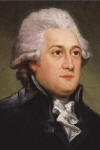

Click here to read "Riding Across the Sahara," an exciting Story from the Road by Jamie Bruce-Lockhart, who has edited and published Clapperton's journals, "Difficult and Dangerous Roads."
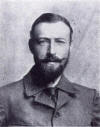
Even though John Talbot Clifton (1868-1928) was born into a life of wealth and privilege, the English aristocrat suffered from a serious affliction. His life revolved around his insatiable desire to roam the world.
He set off when still in his early twenties, determined to see the world, and soon circumnavigated the globe twice.
Never afraid to live rough and travel hard, he ventured to South America, Africa, Australia, New Zealand, China, Burma, Malaya, Indonesia, India and Russia, to name just a few.
When the celebrated Historical Long Rider “Gentleman” Harry de Windt was making his famous land crossing from Paris to New York, he was surprised to find a fellow European making his way towards him across the frozen Siberian waste. It was Talbot Clifton.
But the young explorer was no mere travel junky. Soon after he first reached America he wasted no time before he set about romancing the famous actress, Lily Langtry. But even the beauty of the “Jersey Lily” couldn’t keep Talbot Clifton on a leash and he continued to wander the world. Eventually the call of the Sahara lured Talbot Clifton to his doom. He set off on horseback in 1927 in a vain attempt to reach the legendary Timbuktu. The man who had seen most of the world never saw that distant desert metropolis. He died and his embalmed body was returned and buried on his estate in Scotland.
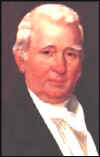
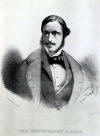
Click here to read "Death on the River," a hair-raising and deadly story from Coke's book.
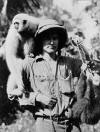
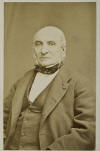
Pascal Coste was a French architect whose search for knowledge inspired him to explore Egypt and Persia on horseback. Coste’s first journey took him to Egypt in 1817, where he spent four years working as the chief engineer for the local ruler, Mehmet Ali. By 1827 Coste’s architectural drawings had attracted the attention of the French government. He was dispatched, along with the painter Eugène Napoléon Flandin, to visit Azerbaijan, Ispahan and Shiraz. Coste also inspected the ruins at Persepolis, Nineveh and Babylon, where he made many famous sketches. A tireless traveller, by the time he died at 92 Coste had explored most of Europe and Russia.
Wilbur Cummings Jr. - In the company of fellow American, F. Bailey “Billy” Vanderhoef Jr., Wilbur Cummings set off in 1938 to ride from the Indian town of Kalimpong, over the Himalayan Mountains, to the Tibetan city of Gyantse. Thanks to the University of California Santa Barbara and the Santa Barbara Museum of Art, Cummings important travel book, “A Journey to Western Tibet,” with its many historic images, has been made available to the public.
During their time together as students at Harvard University, both young men had expressed a mutual desire to visit Tibet, so when a museum offered them a chance to photograph the famous Saga Dawa religious ceremony they jumped at the chance. The highlight of this ceremony was the unveiling of a famous massive religious painting which was only shown for two hours each year.
Yet religious values couldn’t save the young travellers from noxious daily remainders. Their journey took them through the town of Phari, which had the unpleasant reputation as being the filthiest place in the world. Because of its bitterly cold climate, Phari lived in a nearly frozen state for nine months every year. As result, the residents simply threw their refuse out the window into the frozen street. Over the years the street would raise to the point that the first floor of the buildings were buried under the decay, prompting the Tibetans to simply build another floor atop the building. When Cummings and Vanderhoef rode through Phari, their horses were almost up to their knees in slime and they were forced to hold their breath as they passed through the toxic miasma.
Their efforts were rewarded however. Upon reaching the Tibetan city of Gyantse, they not only observed the special religious festival, they also procured some of the first colour photographs of Tibet. In 2008, the many paintings, sculptures, photographs and journals they had collected were donated to Tibetan Collection at the Santa Barbara Museum of Art.
Robert Cunninghame Graham (1852-1936) author, traveller explorer, politician and adventurer, was a man of extraordinary talents, tireless energy and considerable courage. His friend and contemporary Joseph Conrad remarked, “When I think of Cunninghame Graham, I feel as though I have lived all my life in a dark hole without seeing or knowing anything.” In a crowded life — Cunninghame Graham was variously a Member of Parliament, a gaucho in South America, a fencing master, a founder member of both the Independent Labour Party and the Scottish National Party, a rancher, horse-trainer, buffalo hunter and Long Rider through North and South America — he wrote prolifically. Known as "Don Roberto," he was the author of travel books, a biography, eleven histories of Latin America and fourteen volumes of short stories and sketches. This special collection entitled The Cunninghame Graham Collection been made possible by the enthusiastic support of the Cunninghame Graham family. The highlight of the collection is the newly-published biography of the Scottish patriot by his great-niece, Jean Cunninghame Graham.
George Nathaniel Curzon,
1st Marquess Curzon of Kedleston, is usually remembered for having been the late
19th century Viceroy of India who helped rescue the Taj Mahal from
neglect. However, in addition to his political career, this talented leader was
also a lifelong horseman whose early riding career nearly ended his life. Having
suffered a spinal injury, incurred while riding as a teenager, Curzon was left
in lifelong pain. Though his injury required him to wear a metal corset under
his clothes, and contributed to an unfortunate impression of stiffness and
arrogance, Curzon’s longing for equestrian adventure would not be denied.
Despite his injury and the resultant pain, Curzon set off in 1894 to ride 3,200
kilometres across Afghanistan and into the unexplored Pamir mountains. There he
established the source of the fabled Oxus river. Yet it was the legendary Pamir
mountain range, which sits between today’s Afghanistan, Kyrgyzstan and
Tajikistan, which was to provide the future Viceroy with the equestrian
exploration experience necessary to equip him to ride later in Persia, India,
Turkistan, the Middle East and Japan.
